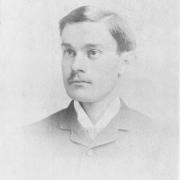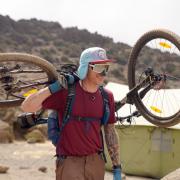With spring in full swing, now is the time to take up the new activity you've been promising yourself all these years. Here six enthusiasts from land, air and sea sports put the case forward for their favourite pastime
KENT BY AIRIf you’ve always fancied flight, here are some suggestions on the best way to spread your wings
FLYINGPeter ThompsonSecretaryAlouette Flying Club, Biggin Hill Tell us about flyingI retired early but it took nearly seven years for my wife, Liz, to convince me to take up flying. I took my first trial flight at Alouette in 2008, making my first solo flight in the August and 10 months later, I obtained my PPL.So why take up flying? Well, there is the satisfaction of achieving something that is perceived to be something for the younger man. Flying over the countryside there are no roundabouts, no summonses for speeding, no one that wants to go at a snail’s pace, no pedestrian crossings and certainly no traffic lights. There are rules of the air and aviation law to consider, but as long as you keep out of controlled airspace, you can fly around to your heart’s content. The weather can be unpredictable, but on a nice day you can fly to France or Belgium for lunch; does it get much better than that? Liz and I have even taken Mavri, our chocolate Labrador, to the Isle of Wight for a walk along the cliffs to the Crab and Lobster pub for lunch. It’s is not the cheapest thing to do as a hobby but I know many people who annually spend more money on golf or game shooting than I do on flying.What equipment do I need?Surprisingly little; most clubs will lend headsets, but generally people buy their own. You’ll also need a map, stopwatch, ruler and notepad and a CRP flight computer.Any advice for beginners?Grass airstrips can be hard to spot, and it’s advisable to not land on the taxiway! The buck stops with you, so if you feel you are unable to comply with a request, say so. Also, don’t panic! If you are not sure of where you are, ask. There is always help available.How do I get involved?Le Touquet for lunch may sound ostentatious, but it is surprising just how many people make the trip; it’s only about an hour from Biggin Hill and doesn’t cost too much. It is important to join a good club where you can share experiences and learn from others. At Alouette there is such a diversity of members from a variety of jobs and backgrounds, from young to mature: we still have active pilots who are well into their seventies. Come along to the club for a chat.For more information on flying at Alouette, tel: 01959 573243.
SKYDIVINGClem QuinnSenior instructorHeadcorn Parachute Club
Tell us about skydivingI started jumping in the 1980s and it took me more than a year to get fully qualified, but I haven’t looked back since. I have been an instructor since 1991, and have a total of 7,500 jumps; more than 6,000 of these are taking people on tandem skydives. What I love about this sport is the interesting people you meet and the thrill of introducing people to our ‘office’. I get such a sense of achievement taking people out of a plane and into freefall after only a short briefing, and once the parachute is opened I can show them the sights of Kent and they can just enjoy the ride, or I can teach them to fly the parachute. I can also tell them jokes to calm their nerves!Most people making their first jump opt to do the tandem skydive, but many people don’t realise that it is possible to jump solo first time, although you do have to complete a full day’s training first. At Headcorn Parachute Club, we offer static line training where the parachute is automatically opened when you leave the aircraft, or you can do the accelerated freefall course, where you leave the aircraft wearing your own parachute but with two instructors holding onto you during the freefall part of the descent. Both these types of jump are the start of a progression system that leads you onto getting your full licence. We have many club members with their own licences and equipment who jump here on a regular basis.What equipment do I need?As a beginner we do not require you to have any of your own specialist kit, just some comfortable clothing, a pair of trainers and sturdy underpants!Any advice for beginners?One beginner mistake is not allowing for the fact that skydiving is a weather-dependant sport, and another is not paying the extra for the DVD and photos! Also, thinking you are not going to enjoy the experience and not arriving equipped with a sense of humour.How do I get involved?The only place to jump in the south east of England is here at Headcorn Parachute Club. For more information, tel: 01622 890862.
KENT ON LAND If you’d prefer to keep your feet on the ground, then there’s some great opportunities in the Garden of England
BIRDWATCHINGChristine HawkinsVisitor Centre ManagerRSPB Dungeness
Tell us about birdwatchingBirdwatching is a great way to spend time outdoors enjoying nature. It doesn’t need to cost anything and doesn’t even need to take much effort; you can watch birds anywhere, any time, any place. You don’t even have to know anything about birds to enjoy watching them, although you’ll probably find once you start to notice them, curiosity will lead you to wonder what kind of bird it is you are looking at. That’s the time to get yourself an identification guide and perhaps join a guided walk or two. Whether you simply enjoy the sheer beauty of a majestic marsh harrier hunting over a reedbed or are captivated by their behaviour, birds provide a constant source of enjoyment.Of course, birdwatching can also appeal to the collectors among us, with many birders keeping lists of the species they’ve seen, often resulting in a little healthy competition among friends.It’s also a hobby that can be enjoyed in splendid isolation, with one or two companions, or in a group. It’s a great way to meet like-minded people and contrary to popular belief, we’re not all anoraks!What equipment do I need?You really don’t need expensive equipment or expert knowledge to go birdwatching – the most important tools are your eyes, ears and brain! Bird book To avoid confusion, a book which contains only birds which occur in Britain is best to start with. Binoculars You don’t need to spend a vast amount of money on binoculars to get a decent pair.RSPB membership From just �3 a month, you’ll receive a bird guide and free entry to more than 150 RSPB reserves. Any advice for beginners?Birds don’t always look like they do in the books, and don’t always believe what you hear; some birds are notorious for mimicking other species.How do I get involved?Adult groups run walks and hold talks, and there are youth groups that run activities to get the kids interested.Kent has a great choice of reserves to visit which provide excellent opportunities to watch birds at close range. For more information, tel: 01797 320588.
SHOOTINGDave EvansLife-long enthusiastJJ’s Shooting Club, Dartford
Tell us about shootingI’ve always been interested in shooting in various forms, starting with archery as a teenager and rifles with the Army Cadets at my school, and I’ve continued to shoot as a hobby ever since.About two years ago, I arranged to collect some rifle parts and agreed to meet at a local clay shoot. I got my rifle parts and was about to leave, when somebody asked me if I wanted to try my hand with a shotgun. I honestly don’t remember how many clays I hit, but I know it wasn’t all that many; needless to say, I was hooked!It’s a very personal activity and like golf, it’s you against the course, bringing the elation of good shots and the frustration of bad ones. It’s a simple hobby to manage – you can arrange to shoot with friends, but the great thing is that if you suddenly have a bit of time free ,you can go to the shooting ground whenever it suits you.Clay shooting also has many different disciplines, my personal favourite being English Sporting. The sporting layout consists of anything between six and 12 different sets of targets spread out over a course covering acres, and the targets are changed frequently.What equipment do I need?The basic safety equipment required is defined by the Clay Pigeon Shooting Association. The only safety kit you will need (provided by all good clubs) is a pair of ear defenders, safety glasses (to protect from pieces of broken clays) and a cap or some form of head cover (again to protect from pieces of falling clay). Once you decide that you want to continue with clay shooting, you may want to buy a shooting vest, which is similar to a waistcoat or gilet with a shoulder patch and large pockets for carrying cartridges. How do I get involved?Find yourself a club and let them take it from there. Kent has a number of excellent clubs, my favourite being JJ’s in Dartford (tel: 07771 507851). It’s a friendly, family-run shoot that caters for all abilities, with exceptional coaches. The co-owner and head coach, Mark West is also an ex-world champion and a first-class coach, and all ages and abilities are encouraged at the club.There are also a number of magazine including Pull, Clay Shooting, Shooting Times and Sporting Gun, which all carry useful information for the beginner.
KENT BY SEAIf life on the waves is what you’re after then Kent, with it’s majestic coastline, is an excellent place to get your feet wet
SCUBA DIVINGSamantha VarnsInstructorDive Machine, Tonbridge
Tell us about scuba divingScuba diving is a relaxing but active recreational sport that can be enjoyed in our local pools, lakes and seas, or on holiday. Scuba diving is for anyone who is of the age of eight or above and who is in good physical shape.Have a go on a try dive or discover scuba session, where you get to blow bubbles for the first time in the confines of a warm clear swimming pool. Be aware – it can be addictive!Diving locally, we get to see all of the marine life up close and in its natural habitat, and the historical preservation of wrecks and artifacts. The reefs off England’s south coast hold some wonderful sights for those who wish to have a comfortable 14 to 16-metre dive.When you’re abroad, and with advanced or specialty training, you can get to see some real treats looking at the reef and wrecks, and along the way you get to see the resident turtles along with the barracuda on either port or starboard side depending upon which way the current is running. If you look close enough you may see some of the smaller organisms that are there living on the wreck, from nudibranch to the clown fish.What equipment do I need?• Mask• Slap strap • Fins• Snorkel• Boots• Exposure suit• Anti fog (de-mister)• Kit bag to carry it inAny advice for beginners?Try and avoid holding your breath, and also breathing too much. Always try and use a demister on the inside of your mask (a fogged-up mask can ruin your dive), and get your finning technique right, otherwise you’ll use up a lot of energy getting nowhere!How do I get involved?Contact your local dive centre for information and advice. The south coast has some wonderful reefs and within Kent there are various places we can dive as well. For a holiday, The Red Sea is ideal but wherever there is a body of water, the marine life can be spectacular. For more info, get in touch with Dive Machine, tel: 01732 773553.
KITESURFINGLance Nunn, InstructorKent Kitesurfing School, Board-worx, WhitstableTell us about kitesurfingMore than 10 years ago kitesurfing was introduced as a new water sport, combining windsurfing, wakeboarding and power kiting.Using the kite as a source of power we are able to travel across the surface of the water with a small board, now able to ride big waves, flat water speed sailing with speeds up to 55mph and, recently, being able to ride ramps and rails.Whitstable has some of the best kitesurfing conditions in the world, with help from the natural sand bank that heads out to sea off the coast Whitstable, known as The Street, creating calm, flat waters. We can teach kitesurfing here in shallow, flat-water conditions with the protection of the stone sand bar, and after a day’s work on the water I can then go for a ride with friends and previous students while benefiting from the amazing location.One of the major benefits of kitesurfing is that it keeps all riders fit and healthy, while allowing people to enjoy the beautiful Kent coastline. Kitesurfing also has brilliant potential to allow you to meet new people, with a vibrant social scene and plenty of people to help you when starting out.What equipment do I need?Kitesurfing equipment can be pricey for your first set up, but once you have the kit, the wind and beaches are free. A typical kit list would include:one kite (eventually two, to cover different wind strengths), a kiteboard, harness, bar and lines, pump, wetsuit, helmet and buoyancy aid.We do offer a kit exchange and trading service at Board-worx. A full set up of kit can be as little as �500 second hand, but what you must take into consideration is the different kite sizes you need, ranging from as small as 5m to 20m, depending on the wind speed and rider weight.
Any advice for beginners?When learning, your opportunities to ride are minimal, as the wind speed and direction must be perfect, as well as tides. It takes a fair amount of commitment and dedication, but nothing good in life comes for free!
How do I get involved?Different locations work on different wind directions; Kent is lucky to have a wide range of beaches that can be kitesurfed in any wind direction. The safest and easiest way to get involved is to take part in lessons taught by professionally trained instructors in Whitstable or Pegwell Bay, with Kent Kitesurfing School, based at Board-worx in Whitstable. For more information, tel: 01227 276566


























